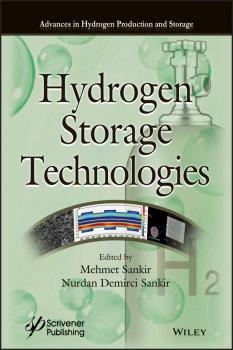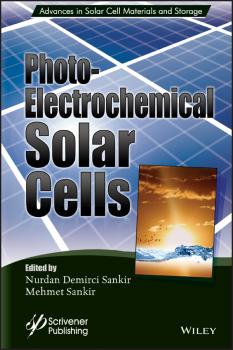ТОП просматриваемых книг сайта:
Mehmet Sankir
Список книг автора Mehmet SankirАннотация
This book provides an overall view of the new and highly promising materials and thin film deposition techniques for printable solar cell applications. The book is organized in four parts. Organic and inorganic hybrid materials and solar cell manufacturing techniques are covered in Part I. Part II is devoted to organic materials and processing technologies like spray coating. This part also demonstrates the key features of the interface engineering for the printable organic solar cells. The main focus of the Part III is the perovskite solar cells, which is a new and promising family of the photovoltaic applications. Finally, inorganic materials and solution based thin film formation methods using these materials for printable solar cell application is discussed in Part IV.
Аннотация
The book is organized in three parts. Part I shows how the catalytic and electrochemical principles involve hydrogen production technologies. Part II is devoted to biohydrogen production and introduces gasification and fast pyrolysis biomass, dark fermentation, microbial electrolysis and power production from algae. The last part of the book is concerned with the photo hydrogen generation technologies. Recent developments in the area of semiconductor-based nanomaterials, specifically semiconductor oxides, nitrides and metal-free semiconductors based nanomaterials for photocatalytic hydrogen production are extensively discussed in this part.
Аннотация
Hydrogen storage is considered a key technology for stationary and portable power generation especially for transportation. This volume covers the novel technologies to efficiently store and distribute hydrogen and discusses the underlying basics as well as the advanced details in hydrogen storage technologies. The book has two major parts: Chemical and electrochemical hydrogen storage and Carbon-based materials for hydrogen storage. The following subjects are detaled in Part I: • Multi stage compression system based on metal hydrides; • Metal-N-H systems and their physico-chemical properties; • Mg-based nano materials with enhanced sorption kinetics; • Gaseous and electrochemical hydrogen storage in the Ti-Z-Ni; • Electrochemical methods for hydrogenation/dehydrogenation of metal hydrides. In Part II the following subjects are addressed: • Activated carbon for hydrogen storage obtained from agro-industrial waste; • Hydrogen storage using carbonaceous materials; • Hydrogen storage performance of composite material consisting of single walled carbon nanotubes and metal oxide nanoparticles; • Hydrogen storage characteristics of graphene addition of hydrogen storage materials; • Discussion of the crucial features of hydrogen adsorption of nanotextured carbon-based materials.
Аннотация
This book provides an overall view of the photoelectrochemical systems for solar hydrogen generation, and new and novel materials for photoelectrochemical solar cell applications. The book is organized in three parts. General concepts and photoelectrochemical systems are covered in Part I. Part II is devoted to photoactive materials for solar hydrogen generation. Main focus of the last part is the photoelectrochemical related systems. This part provides a diverse information about the implementation of multi-junctional solar cells in solar fuel generation systems, dye-sensitized solar hydrogen production and photocatalytic formation of photoactive semiconductors.




